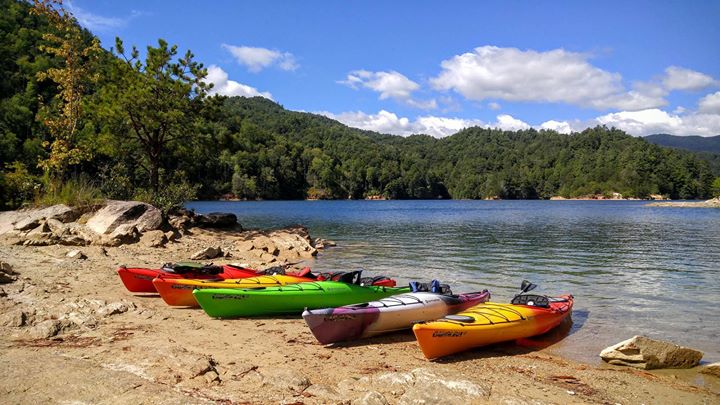Kayaking is a diverse outdoor sport that can be enjoyed independently or tandem and anywhere from the oceans of the coast to the rushing rivers of the valleys. For every paddler from the morning kayak along the banks of a calm lake to the weekend warriors who rip roar through class four rapids, there is a kayak for everyone. Whether you’re a seasoned paddler looking to expand your horizons or are looking to rent or buy a kayak for your own water venture, here is a guide to finding the one for you.
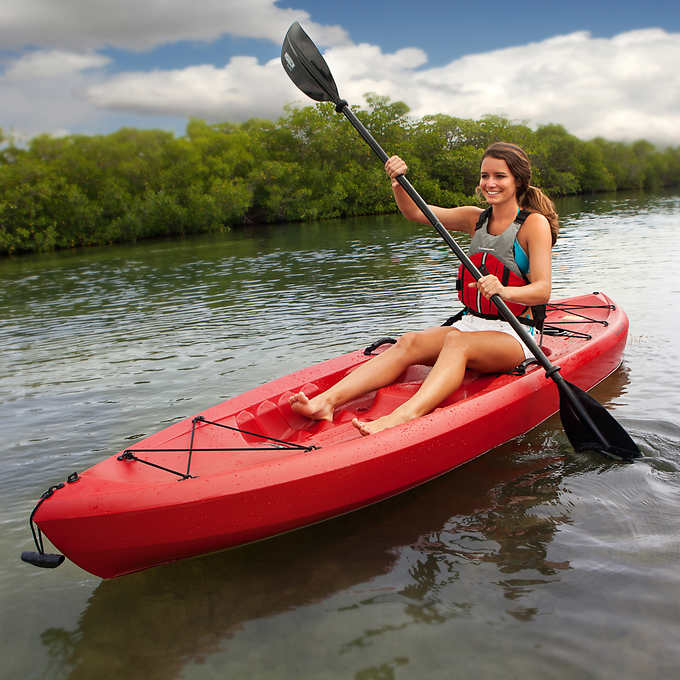 Sit on top kayaks are popular with those looking to not feel constrained and aren’t planning to be tackling any roll-worthy rapids. These provide a nice stable platform for the paddler while providing increased mobility and flexibility compared with the sit-in models. Some drawbacks to consider with this style boat are that they must be wide enough to compensate for the higher center of gravity, making them slower and are a bit more heavy to haul to and from the waters.
Sit on top kayaks are popular with those looking to not feel constrained and aren’t planning to be tackling any roll-worthy rapids. These provide a nice stable platform for the paddler while providing increased mobility and flexibility compared with the sit-in models. Some drawbacks to consider with this style boat are that they must be wide enough to compensate for the higher center of gravity, making them slower and are a bit more heavy to haul to and from the waters.
Sit in kayaks come with the benefits of being drier, allow for extended paddling seasons, allows your body to control the movement of the vessel better, and storage as well! If you wanted to pack a small tent, food, and other small gear- you could use a sit in kayak as your transportation to an island for a night under the stars. This style of kayak has a raised lip around the cockpit where the paddler sits, allowing for the use of skirts which serve to keep water out of the boat. This becomes a major draw for those wishing to make it down a river.
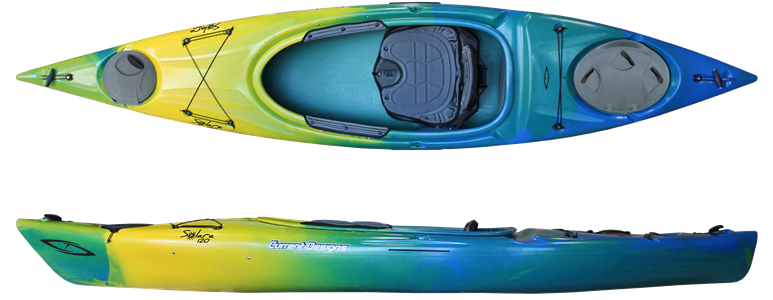 Recreational kayaks are highly favored for beginner and low intensity seeking paddlers. You will mostly find these style of boats on flat waters such as lakes, ponds, and perhaps a gentle river. Most basic rental kayaks fall into this category as they are good for a leisurely paddle and give you the stability to feel safe taking a camera along for some nature photography along your journey. With wide cockpits, these boats are easy to get in and out of, making them very user friendly.
Recreational kayaks are highly favored for beginner and low intensity seeking paddlers. You will mostly find these style of boats on flat waters such as lakes, ponds, and perhaps a gentle river. Most basic rental kayaks fall into this category as they are good for a leisurely paddle and give you the stability to feel safe taking a camera along for some nature photography along your journey. With wide cockpits, these boats are easy to get in and out of, making them very user friendly.
Touring kayaks are also meant for calm waters like the recreational style, however they are built slightly differently as they trade designs to be a little less maneuverable like whitewater kayaks so they can be ideal for higher cruising speeds, comfort for longer journeys, and allow for good cargo capacity. These are great for the ease of straight-line paddling and are often built to be 17-20 feet long.
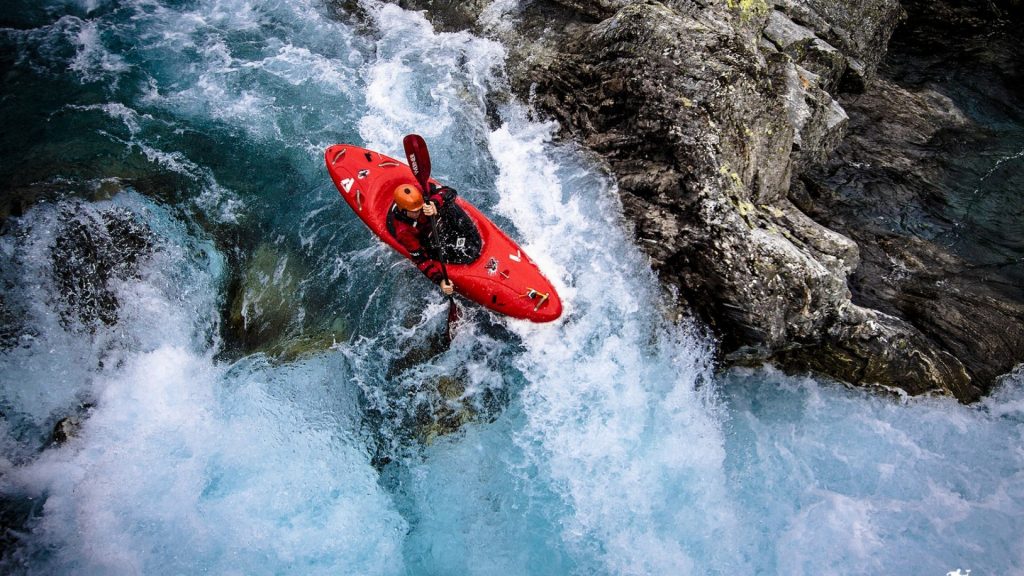 Whitewater kayaks are those tiny things you see strapped to cars going past you on the highway that make you wonder, “How does someone fit in that thing?” These boats are designed short in order to do their job- keep paddlers in the boat. They are meant to be easily maneuverable so that paddlers can make it through rougher conditions than you would find on still waters. While these are great for river paddling, they are most definitely not a 2 in 1 deal. Do not plan on taking one of these bad boys on a lake as they are just not built to track in a straight line. Not meant for storage or for leisurely rides, these tiny boat are the gateway for thrills, spills, and often go hand in hand with helmets.
Whitewater kayaks are those tiny things you see strapped to cars going past you on the highway that make you wonder, “How does someone fit in that thing?” These boats are designed short in order to do their job- keep paddlers in the boat. They are meant to be easily maneuverable so that paddlers can make it through rougher conditions than you would find on still waters. While these are great for river paddling, they are most definitely not a 2 in 1 deal. Do not plan on taking one of these bad boys on a lake as they are just not built to track in a straight line. Not meant for storage or for leisurely rides, these tiny boat are the gateway for thrills, spills, and often go hand in hand with helmets.
Sea kayaks are, no surprise here, ideal for ocean paddling. Designed with directional stability, these boats can handle the sea’s sometimes unpredictable conditions. However, I would not expect to stay dry your first time in a sea kayak as there may be a learning curve coming your way with these. Unique features to sea kayaks are their bow and stern bulkheads that keep water from filling the ends of the boat in the event that it is capsized. To avoid this potential, many sea kayakers go with the sit on top sea kayaks that will not fill up since they have no cockpit.
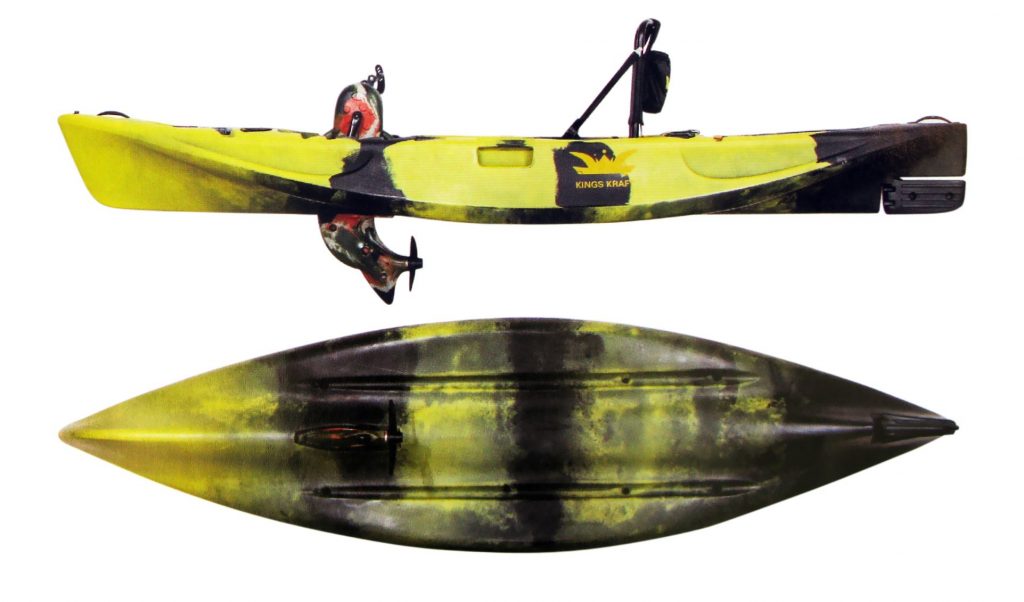 Pedal kayaks are a niche within the paddling community that has become synonymous with those who enjoy fishing from a kayak. The draw here is that with both hand on a rod as the paddler fights to bring the fish to the surface, you can still have full control of going both forward and in reverse by using your feet. Trying to fish in other style kayaks is possible, but it does add the extra step of juggling the paddle and the rod. The way it works is the pedals work to spin a small propellor toward the front of the boat. With the foot pedals keeping you moving forward or back, there is also a rudder in the rear of the kayak allowing the paddler to steer.
Pedal kayaks are a niche within the paddling community that has become synonymous with those who enjoy fishing from a kayak. The draw here is that with both hand on a rod as the paddler fights to bring the fish to the surface, you can still have full control of going both forward and in reverse by using your feet. Trying to fish in other style kayaks is possible, but it does add the extra step of juggling the paddle and the rod. The way it works is the pedals work to spin a small propellor toward the front of the boat. With the foot pedals keeping you moving forward or back, there is also a rudder in the rear of the kayak allowing the paddler to steer.
Double kayaks allow you to have company along with you as you paddle and also provide you with ample space for storage. The price that the storage and additional person come at is the function of maneuverability. Not as easy to turn and not easy to be paddled effectively alone, this style of boat is common as rentals and for those who truly enjoy being on the water a lot and want a companion along the way. Who ever said you had to put a human in the second seat? If you’ve got an outdoor loving dog with a lifejacket, you can always go tandem with your pets!
 ‘Bellyak’ boats are a fairly new creation where the kayaker lays on their front side or kneeling rather than sitting upright and uses their arms as paddles. Their appearance resembles a cross between a surfboard and a whitewater kayak. This no paddle necessary ‘body boat’ has several neat characteristics to it. Its design is intended to give you a full body fitness experience and vantage point to where it feels like you are flying on the water. While this may seem out of the norm for the sport, it creates an avenue for many with disabilities to get out on the water and have a great time on the water. Its structure allows for easy re-entry and is lightweight, making it easy to carry for one person, including individuals in a wheelchair. The swim motion strengthens the upper back, shoulders, and arms while developing lateral core strength. Much more than a physical gain, this boat appeals to the hearts of people with a variety of abilities as it makes water sports attainable to all.
‘Bellyak’ boats are a fairly new creation where the kayaker lays on their front side or kneeling rather than sitting upright and uses their arms as paddles. Their appearance resembles a cross between a surfboard and a whitewater kayak. This no paddle necessary ‘body boat’ has several neat characteristics to it. Its design is intended to give you a full body fitness experience and vantage point to where it feels like you are flying on the water. While this may seem out of the norm for the sport, it creates an avenue for many with disabilities to get out on the water and have a great time on the water. Its structure allows for easy re-entry and is lightweight, making it easy to carry for one person, including individuals in a wheelchair. The swim motion strengthens the upper back, shoulders, and arms while developing lateral core strength. Much more than a physical gain, this boat appeals to the hearts of people with a variety of abilities as it makes water sports attainable to all.
Don’t let the large variety of kayaks discourage or overwhelm you. Instead, think of the type of adventure you’re seeking on the water and based on that, you’ll be able to find the proper kayak for the task. To get a good feel for the kayak style made for you, it may be worth the minor expense of renting one for a few hours and giving it a test run before investing in a brand new or used one.
